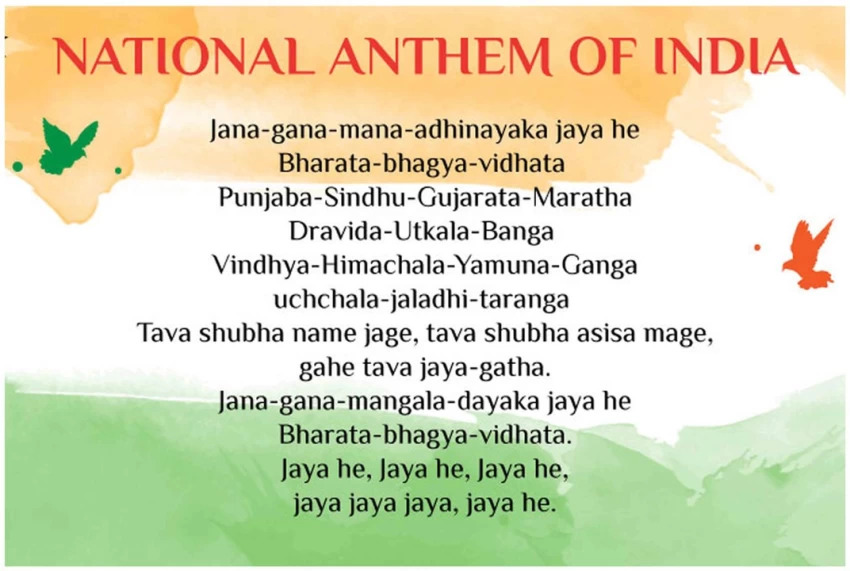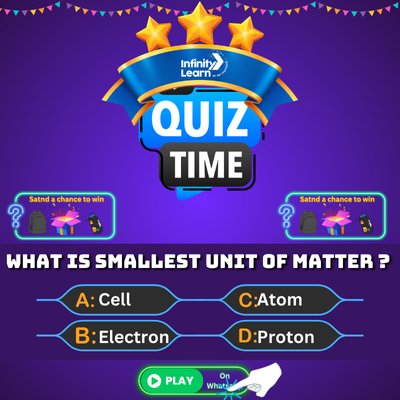Table of Contents
The national anthem of India is “Jana Gana Mana”. It was composed by Nobel Laureate Rabindranath Tagore in Bengali and officially adopted as the national anthem of India on 24 January 1950. It holds a sacred place in the hearts of every Indian citizen, representing the unity and pride of the nation.
History of the National Anthem
“Jana Gana Mana” was first publicly sung on 27 December 1911 at the Calcutta Session of the Indian National Congress. The song was originally written in highly Sanskritized Bengali by Rabindranath Tagore. The historical context is crucial, as the song reflects the sentiments of a unified India even before independence.
Origins and Early Adoption
- Written by: Rabindranath Tagore in 1911
- Language: Sanskritized Bengali
- First Performance: 27 December 1911, Indian National Congress
- Adopted by: Constituent Assembly of India on 24 January 1950
The anthem underscores India’s spiritual, cultural, and geographic unity amidst its diversity.

Full Lyrics of “Jana Gana Mana” (Original Language)
Jana-gana-mana-adhinayaka, jaya he
Bharata-bhagya-vidhata
Panjaba-Sindha-Gujrata-Maharata-
Dravida-Utkala-Vanga
Vindhya-Himachala-Yamuna-Ganga
Uchhala-Jaladhi-taranga
Tava shubha name jage
Tava shubha ashisha mage
Gave tava jaya-gatha
Jana-gana-mangala-dayaka jaya he
Bharata-bhagya-vidhata.
Jaya he! Jaya he! Jaya he!
Jaya jaya jaya, jaya he!
Do Check: GK Questions on National Anthem with Answers
English Translation of “Jana Gana Mana”
Thou art the ruler of the minds of all people,
Dispenser of India’s destiny.
Thy name rouses the hearts of the Punjab, Sindh, Gujarat, and Maratha,
Of Dravida, Orissa, and Bengal;
It echoes in the hills of the Vindhyas and Himalayas,
It mingles in the music of Yamuna and Ganga
And is chanted by the waves of the Indian sea.
They pray for thy blessings and sing thy praise.
The saving of all people waits in thy hand,
Thou dispenser of India’s destiny.
Victory, victory, victory to thee!
Composer & Significance
About Rabindranath Tagore
Rabindranath Tagore (1861-1941) was a Bengali polymath who reshaped Bengali literature, music, and art. He became the first non-European to win the Nobel Prize for Literature in 1913 for “Gitanjali.”
- Contribution: Besides literature, Tagore composed the national anthems of India and Bangladesh.
- Vision: Tagore envisioned India as a harmonious land that embraced its cultural, religious, and geographical diversity.
Significance of “Jana Gana Mana”
“Jana Gana Mana” is more than just a song; it is an expression of India’s ideals and aspirations:
- Unity in Diversity: Encompasses various regions and cultures.
- Spiritual Appeal: A divine blessing for India’s destiny.
- Patriotism: Inspires a sense of pride and collective belonging.
- Do Check: Vande Mataram
Legal Status: When and Where It Is Sung
The Indian national anthem is protected under The Prevention of Insults to National Honour Act, 1971. This law mandates respect for the anthem and prescribes penalties for deliberate disrespect.
Guidelines for Singing the Anthem
- Duration: 52 seconds for the full version; 20 seconds for a shortened version.
- Occasions:
-
- National holidays (Independence Day, Republic Day)
- School assemblies
- Official events
- Sports ceremonies
- Protocol:
- Citizens are expected to stand at attention.
- Respectful behavior is mandatory.
Any deviation or insult can lead to legal action, including imprisonment or fines.
Do Check: National Symbols of India with 17 Names and their Significance
Lyrics in Different Languages
Although “Jana Gana Mana” was originally written in Sanskritized Bengali, its spirit transcends language barriers. Recognizing India’s linguistic diversity, the anthem is available in multiple languages.
Popular Versions
- Hindi: Widely used in Northern and Central India.
- Tamil, Telugu, Malayalam, Kannada: Translations exist but official performances are usually in Sanskritized Bengali.
- English: Used for international representation when needed.
Promoting the anthem in various languages fosters inclusivity and strengthens national unity.
Interesting Facts About National Anthems Globally
- Shortest National Anthem: Japan’s “Kimigayo” — around 11 measures long.
- Longest National Anthem: Greece’s anthem has 158 verses.
- Dual National Anthems: Denmark officially has two.
- Unique Fact about India: Rabindranath Tagore composed both India’s and Bangladesh’s national anthems.
- Adoption Speed: Many countries adopted their anthems years after gaining independence, but India adopted its anthem just three years post-independence.
- Music Composition: The musical notations for “Jana Gana Mana” were set by Captain Ram Singh Thakur during the Indian National Army days.
What is Code of Conduct of National Anthem?
1. Background
The National Anthem of India, “Jana Gana Mana“, evokes patriotism and national pride. To maintain the dignity and respect for the anthem, the Government of India, through various notifications and the Prevention of Insults to National Honour Act, 1971, has laid down a strict code of conduct.
The key guidelines are based on notifications by the Ministry of Home Affairs (MHA) and Supreme Court rulings.
2. Rules and Protocols for the National Anthem
a. Respectful Behavior
-
Whenever the anthem is played or sung, everyone must stand in attention.
-
Standing in attention means:
-
Standing straight.
-
Hands placed by the side of the body.
-
No movement, talking, or unnecessary distractions.
-
-
Military personnel should give a salute as per prescribed protocol.
b. When the Anthem is Played
- During formal State functions.
- During parades and ceremonies.
- Before movie screenings in theaters (earlier made mandatory, now optional unless directed by the theater).
- On national holidays like Republic Day, Independence Day, Gandhi Jayanti, and other occasions as determined by the government.
c. Duration
- A full version of the anthem lasts about 52 seconds.
- A short version (first and last lines) lasting about 20 seconds can be used on certain occasions, but the full anthem is preferred for formal events.
d. Prohibitions
-
No disrespect in any form is allowed, such as:
-
Singing incorrect lyrics.
-
Changing the composition or rhythm arbitrarily.
-
Adding musical or dramatic variations.
-
Dancing or dramatizing during the anthem.
-
Playing a parody or remixed version.
-
Violations can be punishable under the Prevention of Insults to National Honour Act, 1971.
3. Specific Supreme Court Guidelines (Important Highlights)
- Citizens must show respect but cannot be compelled to sing the anthem if they have a genuine conscientious objection (e.g., for religious reasons).
- Standing up during the anthem is mandatory, unless physically incapable.
- Commercial exploitation or disrespect (such as parody) of the anthem is strictly prohibited.
4. Special Cases
- At Home: If the anthem is played (for example, on TV or radio), it is a sign of respect to stand, but it’s not legally enforced at home.
- In Cinema Halls: Earlier, it was mandated to play the anthem before movies (2016 notification), but now it is optional based on a 2018 Supreme Court modification.
- For differently-abled persons: Exemptions are provided based on physical capability.
Do Check: Top 40 Facts about Republic Day of India
Why theatres stopped playing the National Anthem in 1975?
Earlier to 1975, there was a custom to play the national anthem in the theatres after the film. However, it was later removed because of the disrespect of National Anthem by the people as they were not standing up and giving proper attention.
Again Supreme Court of India, on 30th November 2016 made it mandatory to play National Anthem in movie theatres before the screening of movies to instill the sense of patriotism among people. However due to many controversies and violent incidents arising after the order, Supreme Court, on 09th January 2018, reversed the order of making it mandatory to play National Anthem in movie theaters.
Conclusion
Understanding and respecting the national anthem is an essential part of being an Indian citizen. “Jana Gana Mana” encapsulates the spirit of India, transcending linguistic, religious, and regional boundaries. It is not merely a song but a reflection of the country’s unity, pride, and hope.
By learning about the anthem’s history, meaning, and legal importance, we not only show respect but also connect deeply with the soul of the nation.
FAQs on National Anthem of India
What is the full National Anthem?
The full National Anthem of India is 'Jana Gana Mana,' consisting of five stanzas.
What is the main purpose of the National Anthem?
The main purpose of the National Anthem is to express unity and pride in the nation.
How many lines are in the National Anthem of India?
The National Anthem of India, 'Jana Gana Mana,' has 5 stanzas with multiple lines in each.
Who wrote the National Anthem in India?
The National Anthem of India, 'Jana Gana Mana,' was written by Rabindranath Tagore.
What is India's national song?
India's national song is 'Vande Mataram,' written by Bankim Chandra Chatterjee.
Is Jana Gana Mana in Sanskrit or Bengali?
'Jana Gana Mana' was originally written in Bengali.
Is the Indian National Anthem written in Sanskrit?
No, the Indian National Anthem is written in Bengali, not Sanskrit.
Who translated the National Anthem to Hindi?
The National Anthem was not translated; it was written in Bengali but adapted to Hindi pronunciation.
Who is the first writer of the National Anthem?
Rabindranath Tagore is the first and only writer of the Indian National Anthem.
Who sang Jana Gana Mana first?
'Jana Gana Mana' was first sung by a group of students in 1911 at the Indian National Congress session.
Which anthem is written by Rabindranath Tagore?
Rabindranath Tagore wrote the Indian National Anthem, 'Jana Gana Mana.'








